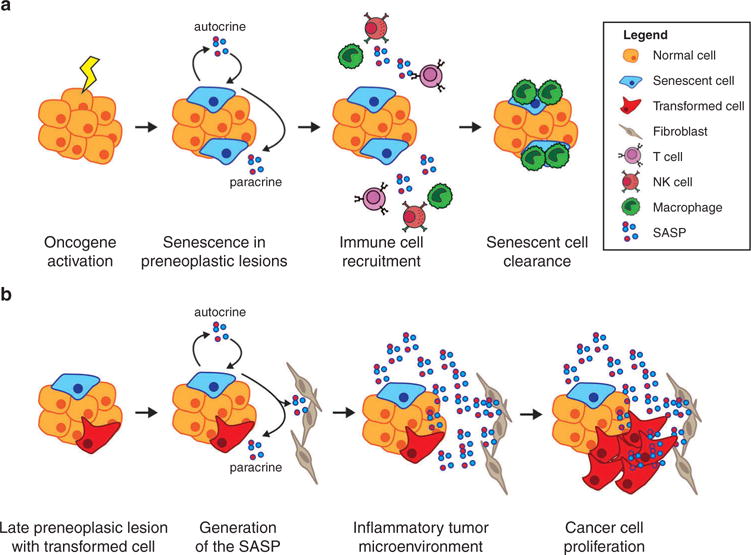Figure 3.

The dual role of the SASP in tumor progression.
Depicted is a model for the role of the SASP at distinct stages of cancer development. (a) In early preneoplastic lesions, cells that acquire oncogenes become senescent. These cells exit cell cycle and generate the SASP, which functions in an autocrine manner to enforce senescence and in a paracrine manner to promote neighboring cells to become senescent. The SASP further recruits various types of immune cells, which recognize and clear senescent cells. (b) In more developed neoplastic lesions that contain fully transformed cells, the SASP generates a pro-inflammatory environment. Fibroblasts are also involved in generating the proinflammatory SASP. This in turn increases the proliferative and invasive capacity of transformed cells.
